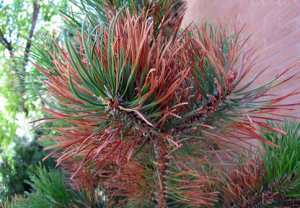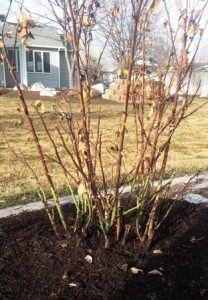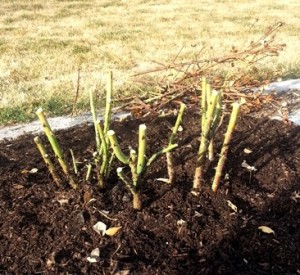Mild Winter? Maybe not.
Mild Winter? Maybe not.
 We all remember last winter for being one of the mildest on record for east Idaho, right? Well, not exactly. It has been extremely mild from February on, but if you can remember back a bit further you might recall that we had some extreme cold in November. In fact from November 11 through November 18 the average low was zero degrees, plunging to -14 on November 16, even colder in outlying areas. Now temperatures like that are not unusual around here in January, but for mid November it was extreme, even for Idaho. To make matters worse the temperature then bounced back to way above normal for several weeks before again plunging for 10 days from December 26 through January 3, bottoming out at -17 on December 31.
We all remember last winter for being one of the mildest on record for east Idaho, right? Well, not exactly. It has been extremely mild from February on, but if you can remember back a bit further you might recall that we had some extreme cold in November. In fact from November 11 through November 18 the average low was zero degrees, plunging to -14 on November 16, even colder in outlying areas. Now temperatures like that are not unusual around here in January, but for mid November it was extreme, even for Idaho. To make matters worse the temperature then bounced back to way above normal for several weeks before again plunging for 10 days from December 26 through January 3, bottoming out at -17 on December 31.
Extreme cold like that can be damaging to plants, but even more so if it occurs early in the winter (or fall) when plants have not yet gone completely dormant. And roller coaster temperatures that plunge below normal, zoom back above normal, and then plunge way below normal again are even tougher on plants.That appears to have been the case this year as a host of plants seemed to take a beating last winter.
Roses, in particular, were hard hit. The roses that I mulched well wintered through just fine (though they died back to the mulch line). But even my hardy shrub roses, which normally winter without any protection, died back to the ground. I only actually lost one rose, but I’ve talked to plenty of folks who lost many, especially if they didn’t mulch them heavily.
Here at the nursery we lost many of the roses and shrubs that we overwintered, even though we protected them like we always do. Many that weren’t killed were heavily damaged. Some of the plants that we have had reports of damage include:
- Roses- especially hybrid teas and climbers
- Fruit trees- especially Peach and Apricot
- Ornamental trees- including Globe Willow, Autumn Blaze Maple, Weeping Cherry
- Evergreens- including Arborvitae, Juniper, Alberta Spruce, Vanderwolf Pine
- Broadleaf Evergrees- including Boxwood, Euonymus, and Daphne
- Shrubs- including Wiegela, Privet, Spirea, and Cotoneaster
- Vines- including Boston Ivy, Silver Lace Vine, and Trumpet Vine
Most things leafed out earlier than normal this spring with the unusually warm weather we have had, but those that were damaged may not have leafed out yet. If you are not sure if a plant is alive try the “thumbnail test”. Dig into the bark slightly with your thumbnail (or with a pair of pruners). Peel back the bark just enough to see if it is green underneath. If it is, then give it some more time. If it is brown it is probably dead (at least that particular branch).
Once you have determined what is dead and what is alive, prune out the dead and see what you have left. In most cases the plant will come back, even if it is pruned severely. Some shrubs will come back from the ground. You will see green sprouts (suckers) coming up around the base of the plant. Some plants will only need to have the dead branches or tips pruned out.
If a plant has been damaged, but not killed, it will usually come back more quickly than you might think. In most cases you will get a larger plant faster if you leave the plant rather than replacing it with a new one. Usually the roots are unharmed and so it will grow back quickly from the large amount of energy stored in the roots. Just prune out the damage and let it come back, if it will. But in some cases you may decide it is too unsightly to keep and you will want to replace it with a new plant.





